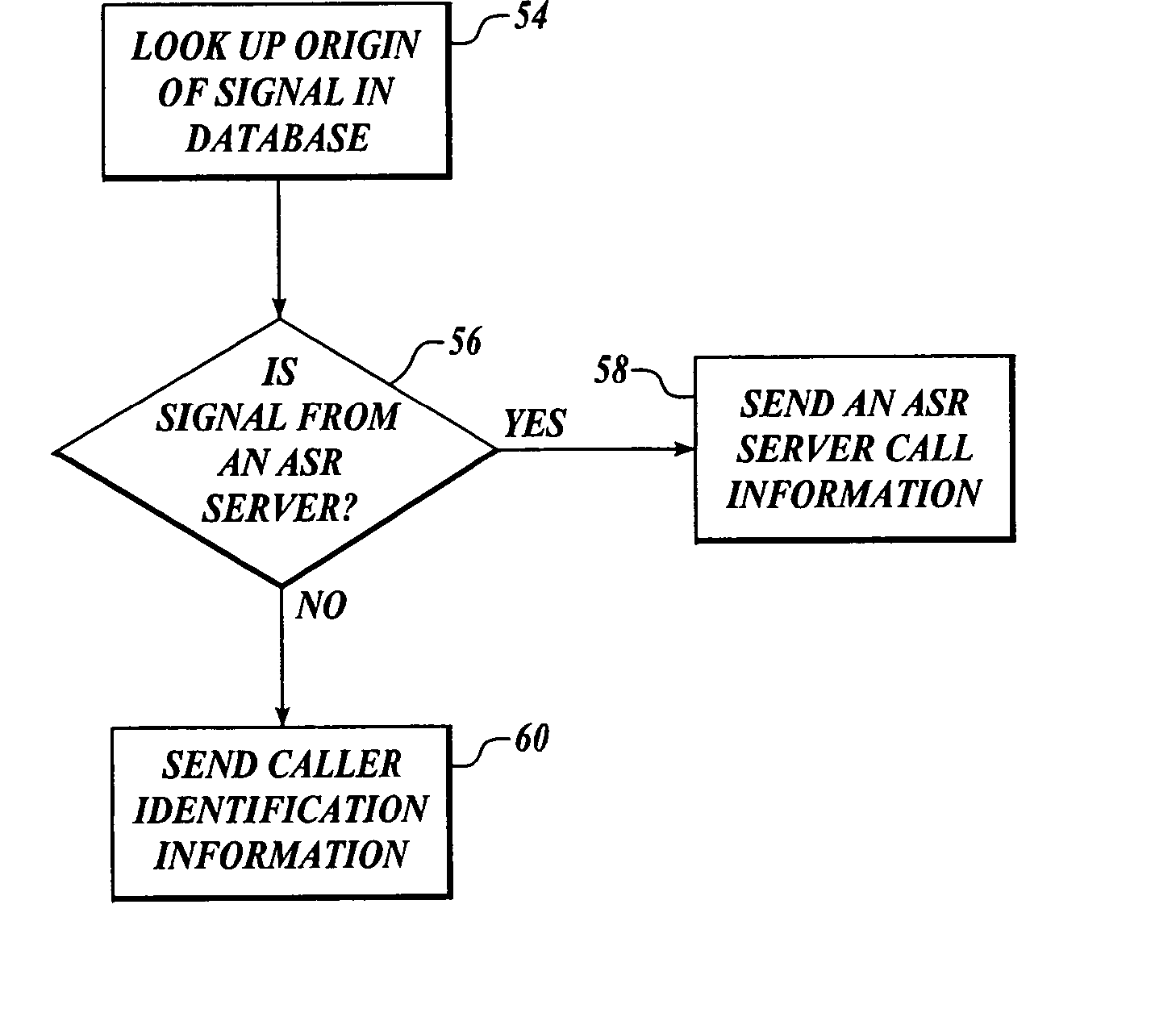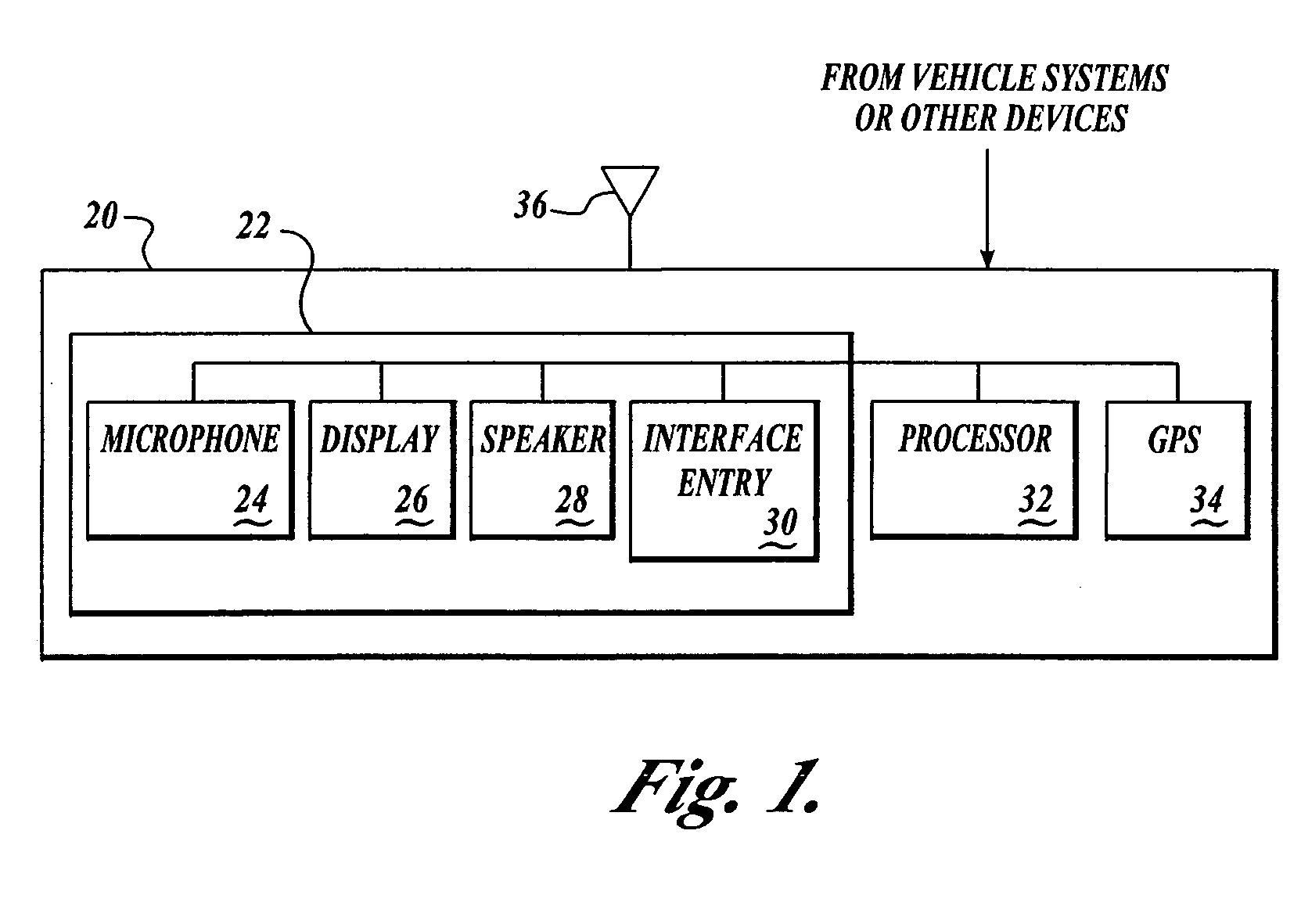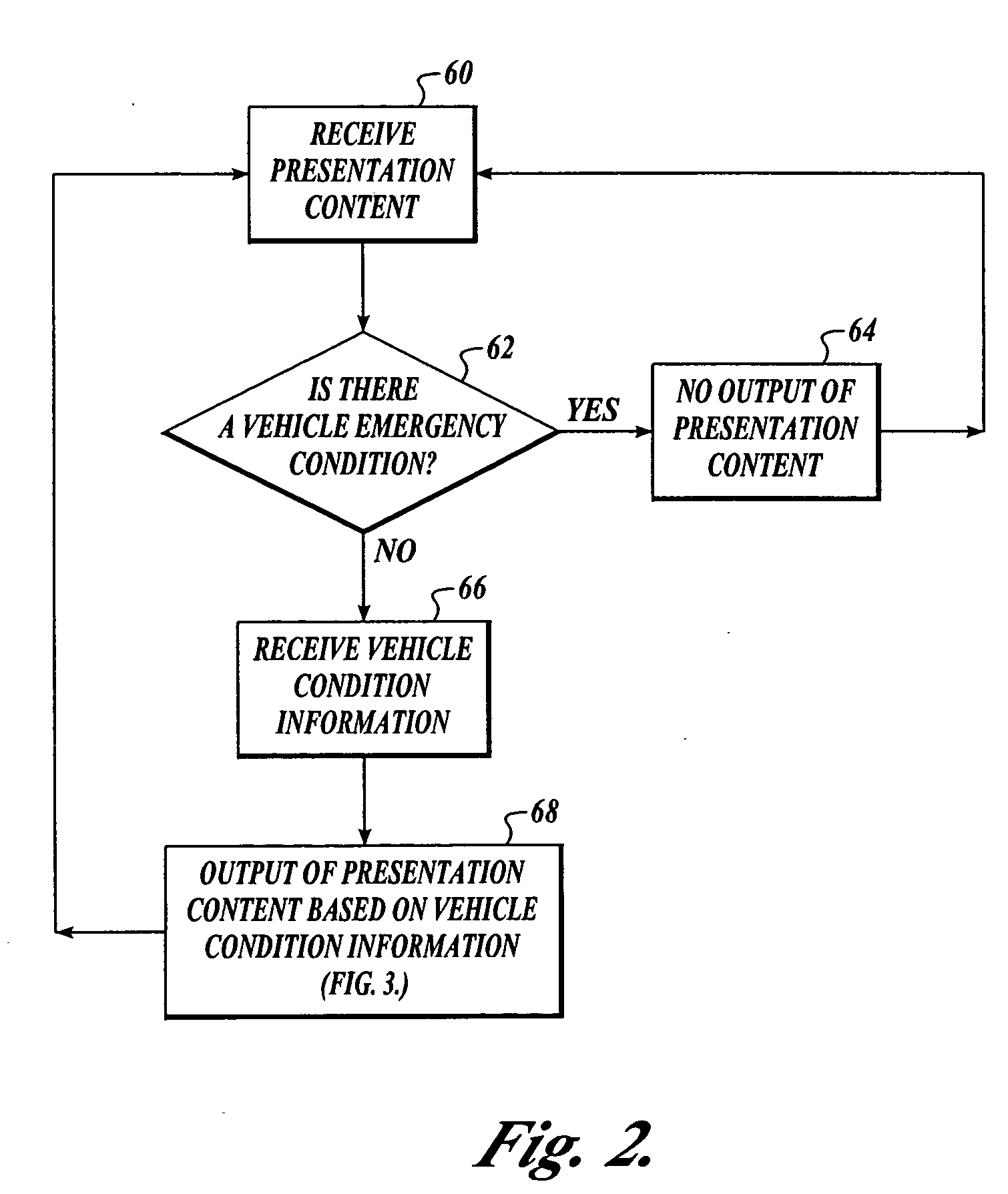The full potential of the telematics industry has yet to be realized in part because of several deficiencies in functionality, features, performance, reliability, cost-effectiveness, and convenience of existing systems.
There are other times, however, when the vehicle operator is too busy operating the vehicle to safely view the displayed information, let alone study the displayed information in exacting detail.
In such situations, the display presentation distracts the vehicle operator because the operator focuses attention on the details shown on the display.
There exist disadvantages with current systems.
A system based on a portable phone mounted in a cradle is inherently unreliable as the phone may become detached from its cradle at the time it is most needed (e.g., because of
crash impact.)
In addition, the driver may have forgotten their phone outside of the vehicle and only discover that when the phone is needed.
The above solution suffers from limitations similar to the cradle solution and more severe.
For example, wireless connections are inherently unreliable.
In addition, the phone may be placed at a location in the vehicle with poor cellular reception (e.g. below
glass window level) that does not have access to a vehicle mounted external antenna.
Lastly, in dense traffic and given BT security issues, conversation privacy may be compromised as it may leak over the BT network to other vehicles in close proximity.
In current applications, however, a single, compromise process is used, with
resultant inefficiencies.
When the owner fails to properly remit
payment, they can be assessed hefty penalties.
Both existing implementations suffer from significant disadvantages.
While converting the
audio signal to
digital data at the vehicle addresses this problem, it requires expensive computing power in the vehicle, which is logistically and cost prohibitive.
Significant disadvantages exist with both forms of vehicle navigation systems.
Indeed, such systems can never really be up to date or comprehensive as they rely on external updates, typically via a CD-ROM or other removable electronic storage medium.
Maintaining an active phone connection, especially in a situation involving long distance travel, is inefficient and expensive, as well as distracting to the vehicle user.
Such attempts, however, are generally limited to a single transaction or information request for only a specific type of product, and do not provide the user with a wide range of information and transaction options related to a variety of products and services.
Moreover, such attempts do not incorporate the use of vehicle information, such as vehicle location, traveling speed, and direction, to customize and tailor the information and transaction options to the specific needs of the user.
This imposes a number of problems, one of which is safety.
Safety is compromised when the user must manually enter a phone number.
Also, the user would have to find the proper phone number, which may be hard to locate under the circumstances or be unavailable to the user.
If the popularity of these devices grows as the
cellular telephone companies expect them to grow, just as the proliferation of cellular telephones has consumed available telephone exchanges and area codes, proliferation of multifunctional devices will consume available cellular bandwidth.
Unfortunately, just as
cellular telephone companies have devised products such as “picture phones,” other technologies doubtlessly will be devised which will require even more
wireless bandwidth.
This is a costly problem.
As a result, any assistance that might be offered through the second communication network 140 is not available to the operator of the automobile 110.
This can be a troubling ordeal, particularly if the operator has driven the automobile 110 to an unfamiliar location.
There are other times, however, when the vehicle operator is too busy operating the vehicle to safely view the displayed information, let alone study the displayed information in exacting detail.
In such situations, the display presentation distracts the vehicle operator because the operator focuses attention on the details shown on the display.
However, in a high
noise environment, such as a motor vehicle, extraneous
noise will undoubtedly be added to spoken commands.
Also, in a vehicle, the cost of running more wire for a second
microphone outweighs any benefit provided by the second
microphone.
However, in a
dynamic noise environment such as a vehicle, the noise is unpredictable, for example, car horns, sirens, passing trucks, or vehicle noise.
As such, noise that is greater than the initial recorded noise may be included in the
signal sent to the speech recognition engine, thereby causing false speech analysis based on noise.
 Login to View More
Login to View More  Login to View More
Login to View More 


